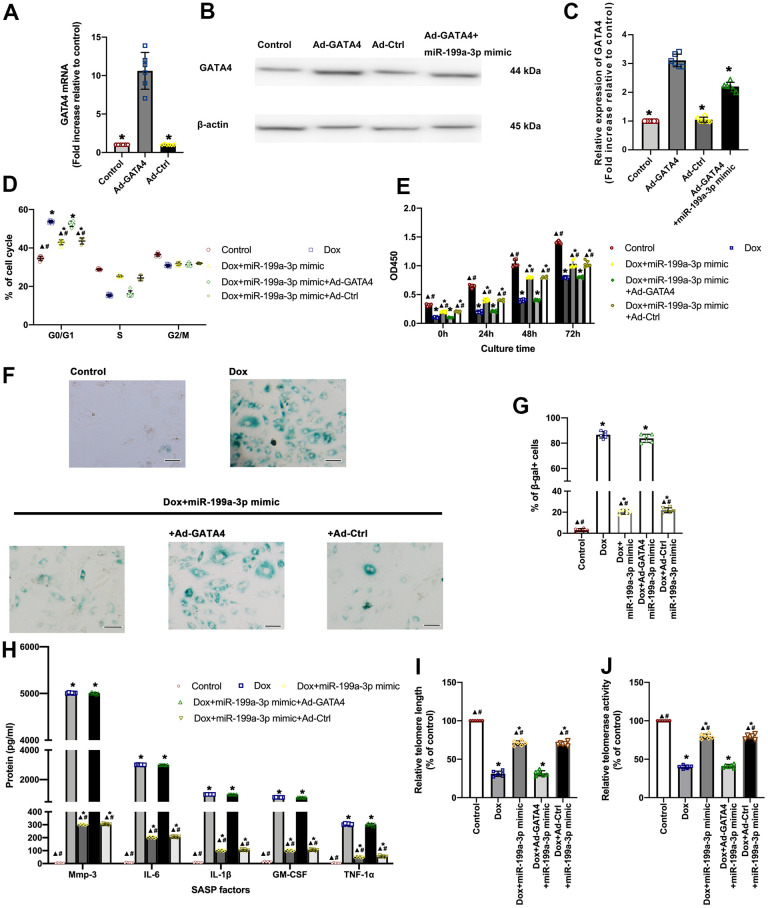Figure 4.
MiR-199a-3p repressed GATA4 contributing to the anti-senescent effect against Dox. (A–C) Cardiomyocytes were infected with Ad-GATA4, Ad-Ctrl, or Ad-GATA4+miR-199a-3p mimic. After 24 h, the cell lysates were harvested for qRT-PCR (A) and western blot analysis (B, C). *P < 0.05 versus Ad-GATA4 in repeated-measures ANOVA, n = 6 per group. (D) The percentages of cells in the three phases of the cell cycle determined by flow cytometry. (E) Cellular proliferation was measured using the CCK-8 assay. (F) Representative images of SA-β-gal staining (senescent cells are stained green). Scale bars, 20 μm. (G) The percentage of senescent cells was calculated. (H) SASP factor protein levels quantified by Luminex of the medium. The medium was collected from such cells as follows: transfection with the miR-199a-3p mimic or the miR-199a-3p mimic + Ad-GATA4, or the miR-199a-3p mimic + Ad-Ctrl, followed by exposure to Dox. The untreated cardiomyocytes were used as the control. (I) Telomere length was detected by qRT-PCR. (J) Telomerase activity was determined using telomerase repeat amplification protocol (TRAP). *P < 0.05 versus control; ▲P < 0.05 versus Dox; #P < 0.05 versus Dox + miR-199a-3p mimic + Ad-GATA4 in repeated-measures ANOVA, n = 6 per group.

